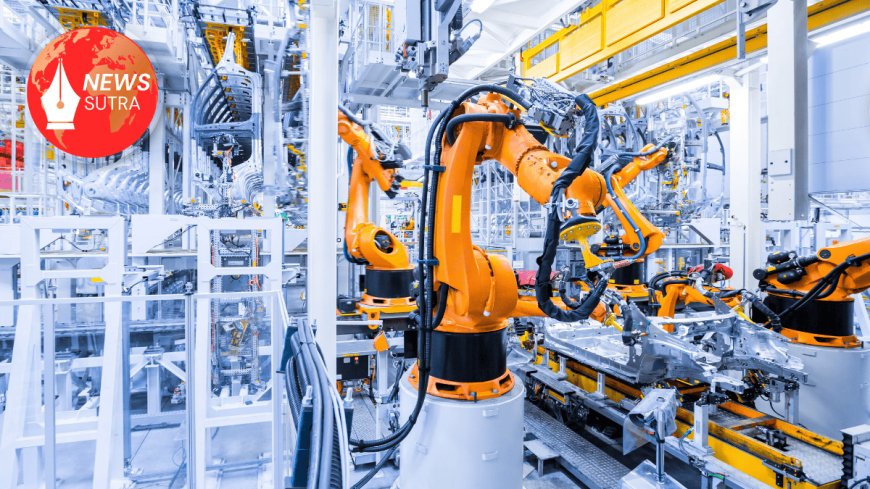Why Global Tech Giants Are Betting Big on India: The New Frontier for High-Tech Manufacturing
Apple, Tesla, and other global tech giants are expanding manufacturing in India, driven by the Make in India initiative and the China+1 strategy. Here’s why India is becoming the next big global factory.

India’s Manufacturing Moment: A Shift in Global Strategy
As global supply chains recalibrate in the wake of geopolitical uncertainties and post-pandemic realignments, India is rapidly emerging as a key manufacturing hub for global technology companies. Major players like Apple, Tesla, Samsung, and Foxconn are either ramping up their operations or actively planning new investments in the country. This shift is not accidental—it’s the result of converging global forces and deliberate national policy.
At the heart of this movement are two critical catalysts: the Make in India initiative and the China+1 strategy. Together, they are redefining India’s role in global high-tech manufacturing.
The China+1 Strategy: De-Risking Global Supply Chains
The China+1 strategy refers to a global business shift where companies, instead of relying solely on China for manufacturing, are diversifying operations by adding another country—often India or Vietnam—to their supply chains.
This trend has accelerated due to:
-
Geopolitical tensions between China and the US, Europe, and its neighbors
-
Supply chain disruptions during COVID-19 lockdowns
-
Rising labor costs in China and tightening regulatory norms
India’s large workforce, improving infrastructure, and increasingly business-friendly policies have positioned it as a natural alternative.
Make in India: Turning Vision into Manufacturing Powerhouse
Launched in 2014, the Make in India campaign aims to transform India into a global manufacturing hub. Over the last decade, the initiative has yielded concrete policy tools:
-
Production-Linked Incentive (PLI) schemes for electronics, semiconductors, EVs, and telecom
-
Simplification of FDI norms in manufacturing and electronics
-
Infrastructure upgrades including industrial corridors, logistics parks, and smart cities
-
Ease of doing business reforms, streamlining labor laws, approvals, and compliance systems
These moves have helped attract over $80 billion in FDI into manufacturing sectors since 2020, much of it in electronics and electric mobility.
Apple’s India Play: From Assembly to Strategic Manufacturing
Apple’s shift toward India is perhaps the most high-profile example of this new trend. The tech giant has moved significant iPhone production to the country in partnership with suppliers like Foxconn, Wistron, and Pegatron.
Key Developments:
-
Apple now assembles over 14% of its global iPhones in India, a figure expected to reach 25% by 2026.
-
In April 2023, Foxconn announced a $500 million expansion of its Chennai plant.
-
Apple opened its first two flagship retail stores in Mumbai and Delhi, further cementing its long-term commitment to the Indian market.
These moves go beyond cost-cutting. They are part of a broader geopolitical hedging strategy, aiming to de-risk production from China while capitalizing on India’s growing consumer base.
Tesla Eyes India: A Game-Changing Opportunity
After years of speculation, Tesla is finally warming up to India. In early 2025, the company resumed talks with the Indian government regarding local manufacturing and supply chain development.
What’s on the table:
-
Plans to set up a Gigafactory in Gujarat or Maharashtra with an estimated investment of $2–3 billion
-
A proposed EV ecosystem including battery packs, power electronics, and charging infrastructure
-
Collaboration with local suppliers for components and software development
While no formal announcement has been made yet, Tesla’s growing interest aligns with India’s aggressive EV policies and the PLI scheme for advanced battery storage.
Not Just Apple and Tesla: The Wider Trend
Other global tech and electronics firms are also deepening their presence in India:
-
Samsung has expanded its Noida facility to become one of the world’s largest smartphone factories.
-
Xiaomi, Oppo, and Vivo now manufacture the majority of their Indian-bound devices domestically.
-
Intel and AMD have shown interest in India’s nascent semiconductor ecosystem, boosted by government support for chip fabs.
Even cloud infrastructure giants like Amazon Web Services (AWS) and Google Cloud are investing billions to build data centers in the country, given its strategic location and growing digital economy.
Key Advantages India Offers
Several structural and strategic advantages are making India the preferred choice:
-
Demographic dividend: A large, youthful workforce with improving skill levels
-
Strategic location: Access to Southeast Asian, Middle Eastern, and African markets
-
Digital infrastructure: Fast-growing internet user base and digital payment systems
-
Policy support: Targeted incentives and strong government backing
-
Political alignment: Favorable relations with the US, EU, Japan, and Australia
Challenges Ahead
Despite the optimism, there are significant hurdles that must be addressed for India to fully capitalize on this opportunity:
-
Infrastructure gaps in logistics, power supply, and port capacity
-
Land acquisition delays for large-scale industrial projects
-
Skill mismatches between educational output and high-tech requirements
-
Regulatory unpredictability in areas like taxation and import-export compliance
The government’s ongoing focus on improving the ease of doing business and streamlining regulatory processes will be critical in sustaining foreign investor confidence.
Conclusion: India’s Strategic Manufacturing Moment Has Arrived
India is no longer just a consumer market for global tech firms—it is fast becoming a strategic production and innovation hub. The convergence of geopolitical realignment, policy reform, and global market dynamics has placed India in a unique position.
As Apple scales its supply chain, Tesla explores local manufacturing, and dozens of other tech firms double down on India, the country is poised to become a vital node in global value chains.
If sustained with continued investment in infrastructure, talent, and policy stability, this shift could redefine India's economic trajectory for decades to come.














